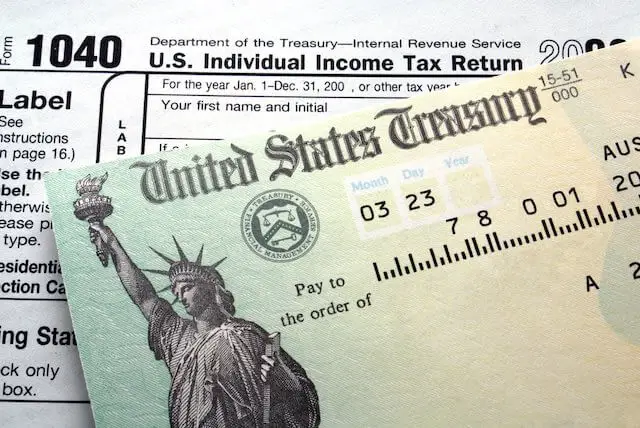The Internal Revenue Service is encouraging taxpayers to double check the withholding amounts from their paychecks to make sure everything is copasetic under the new tax law that went into effect this year.
“After filing tax returns, many people put taxes far out of their mind. However, taxpayers who received a large tax refund this year should think about taxes again…and the sooner the better,” says the IRS.
IRS Withholding Calculator
The IRS has a withholding calculator on its website to perform a “paycheck checkup” and verify that the correct amount is coming out of one’s paycheck. The calculator asks questions such as total income expected during the year, number of dependents, and filing status to guide taxpayers through the process of determining withholding amounts.
It is helpful to have last year’s tax return and your most recent pay stub on hand before using the calculator to be able to answer some of the questions.
The IRS has provided this video tutorial on using the calculator.
Tax Refunds
The IRS says that most taxpayers receive refunds averaging around $2,800. In 2017, it was $2,878. While it may feel good to see a large check come in the mail each year, the IRS suggests taxpayers think twice about big refunds.
“Taxpayers who receive large refunds could receive more of their money throughout the rest of this year, rather than waiting until they file their tax return next year,” says the IRS.
Put another way, it’s better to keep your money and put it to use for your family’s needs throughout the year rather than effectively loaning it to the government with no interest only to have it returned to you at the end of the year.
New Tax Law
Besides creating new tax brackets, the Tax Cuts and Jobs Act also did the following things which can potentially lead to needing to adjust paycheck withholding amounts:
- The standard deduction nearly doubled. The new rules raise the standard deduction to $24,000 for joint filers and $12,000 for singles for 2018. Many taxpayers who previously itemized their deductions will find the standard deduction is now of greater benefit.
- The law removed personal exemptions.
- The law limited or discontinued certain deductions.
Taxpayers with Children
The new law also made changes to the child tax credit. These are some of the key changes to note:
Child Tax Credit
- The maximum child tax credit increased from $1,000 to $2,000 per qualifying child.
- Taxpayers whose income was too high to benefit from the Child Tax Credit in prior years may now find they qualify.
- The credit now phases out at $400,000 for couples and $200,000 for singles, compared with 2017 amounts of $110,000 for couples and $75,000 for singles.
Additional Child Tax Credit
- The maximum additional child tax credit increased from $1,000 to $1,400.
- The ACTC is a refundable credit for taxpayers who owe little or no federal income tax.
Credit for Other Dependents
- There’s a new $500 credit that can benefit taxpayers who support other dependents.
- The taxpayer will claim the credit when filing a tax return.
- For purposes of this new credit, other dependents include qualifying children or qualifying relatives, such as a college student or an elderly parent.
Taxes can be complex, so always be sure to consult a tax professional for additional information or for assistance with preparing and filing taxes when needed.



